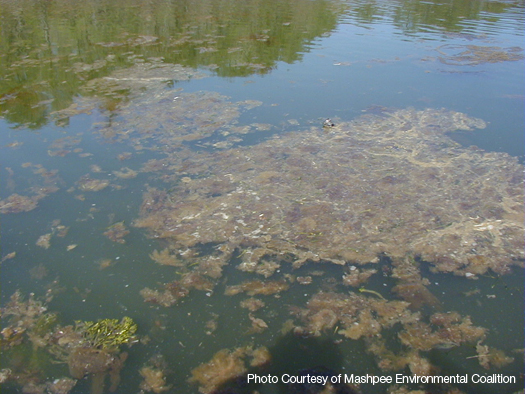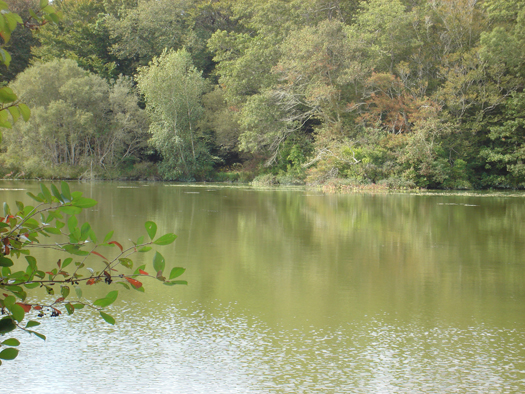What causes the problem?
Nutrient pollution – or too much nitrogen (in salt water) and too much phosphorus (in fresh water) – hurts our natural environment and the industries that rely on it by negatively impacting water quality. It affects our quality of life and the enjoyment we get from spending time near our precious coastal resources.

Example of nitrogen impacts on Coastal Estuaries
 Example of nutrient impacts to Santuit Pond
Example of nutrient impacts to Santuit Pond
Many of us have chosen to live in Mashpee because of its natural resources, but our community’s popularity is our estuaries’ downfall and these estuaries and the problem of reducing the nitrogen pollution to them is the primary focus of this Project.
More homes and businesses mean more nitrogen from human sources is being released into the environment. While nitrogen is present in the environment naturally, in excess it is considered a pollutant. It acts as a fertilizer, causing excess plant and algae growth in the water. This excess growth consumes oxygen and smothers other forms of life. When the plants die they also consume oxygen as they decompose. There is no longer enough oxygen in the water for aquatic life, causing fish kills and harming plants such as eelgrass that serve as a nursery for many important species of fin fish and shell fish. The decomposition of organic matter creates odors and is unsightly, leaving increasingly thick layers of muck on the bottom of our estuaries, impacting recreational uses such as swimming and boating, as well as the economic backbone of the Cape economy – tourism and fishing.

